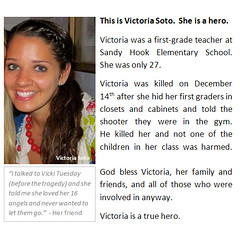Merry Christmas to our readers. I give you a wish, a thought and a song, as well as some fun facts:
WISH: I wish you a great Christmas.
THOUGHT: This is a great time to think of those who are less fortunate.
SONG:
sugar rum cherry -
Duke Ellington's jazzed up version of a part of the Nutcracker. Very cool.
FUN FACTS:(courtesy of our friends at the
United States Census Bureau):
Christmas Trees and Decorations
$1.03 billion
The value of U.S. imports of Christmas tree ornaments from China between January and September 2012. China was the leading country of origin for such items. Similarly, China was the leading foreign source of artificial Christmas trees shipped to the
United States ($139.9 million worth) during the same period. Source: U.S.
Census Bureau, Foreign Trade Statistics <
http://www.census.gov/foreign-trade/www/Where the Toys are ... Made
73 Number of establishments around the country that primarily manufactured dolls and stuffed toys in 2010. California led the nation with 10 locations. Source: U.S.
Census Bureau, County Business Patterns, NAICS code 339931, <
http://www.census.gov/econ/cbp/525The number of locations that primarily produced games, toys and children’s vehicles in 2010; they employed 7,374 workers. California led the nation with 85 establishments. Source: U.S.
Census Bureau, County Business Patterns, NAICS code 339932, <
http://www.census.gov/econ/cbp/$9.6 billion
The value of U.S. toy imports, including stuffed toys (such as dolls), puzzles and electric trains from China, between January and September 2012. China was the leading country of origin for stuffed toys coming into this country, as well as for a number of other popular holiday gifts. These include sports footwear ($227.7 million), basketballs ($41.0 million) and roller skates ($31.8 million). China led Thailand as the leading supplier of ice skates ($10.7 million versus $9.5 million), with Canada ranked third ($3.6 million). Source: U.S. Census Bureau, Foreign Trade Statistics
Holiday Names
Place names associated with the holiday season consist of a dozen places named Holly including Mount Holly, N.C. (population 13,719) and Holly Springs, Miss. (7,638). There is Snowflake, Ariz. (5,587), Santa Claus, Ind. (2,484), North Pole, Alaska (2,154), Noel, Mo. (1,822) and — if you know about reindeer —Dasher, Ga. (934) and the village of Rudolph, Wis. (440). There is also Santa Claus, Ga. (166). Source: U.S.
Census Bureau, Population Estimates
<
http://www.census.gov/popest/data/cities/totals/2011/SUB-EST2011-3.html Hanukkah and Kwanzaa
58% Proportion of the nation’s spuds produced in Idaho and Washington
during the fall of 2011. Potato latkes are always a crowd pleaser during Hanukkah. Source: National Agriculture Statistics Service, Crop Production, Page 14 <
http://usda01.library.cornell.edu/usda/current/CropProd/CropProd-12-11-2012.pdf$1.38 billion
The value of product shipments of candles in 2011 by the nation’s manufacturers. Many of these candles are lit during Hanukkah (Dec. 8 to 16) and Kwanzaa (Dec. 26 to Jan. 1) celebrations.











































